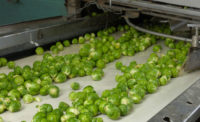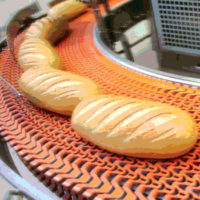The Place of the Sanitation Workforce in FDA's 'New Era' Goals

Credit: mohamed_hassan via Pixabay
Food manufacturing is an ever-evolving area, constantly changing to delight consumers. From plant-based foods, clean labeling, and dairy-free milk to cage-free eggs and even egg-free "eggs," grocery shelves and entire grocery businesses are rapidly changing to meet consumer demands. Alternatives to meat, poultry, eggs, milk, and many other food types are rapidly emerging as massive opportunities, while traditional channels exert new challenges to conventional methods. The frozen food segment alone is expected to reach a value of $504.4 billion by 2030,1 while plant-based foods are expected to be valued at $162 billion in the next decade.2
All of this is exciting news for food innovators searching for new ways to do business. Most innovation journeys begin with the product in mind. However, extending the life of a marketable food product requires business risk management that includes taking action to reduce product loss, mitigating risk to consumers, and securing sourcing. Much of this is dependent on adhering to known methods for producing food safely, efficiently, and hygienically. Thus, the backbone of innovation relies on what some call the "underbelly" of the industry: sanitation. But how much does our industry really know about sanitation as a whole?
Many would agree that sanitation is the most fundamental aspect of an operation's ability to consistently produce high-quality, safe food. Producing food starts with good sanitation and ends with the completion of good sanitation. Despite being a foundational pillar of food manufacturing, when innovation is being considered, sanitation can often be missed in the exciting conversations and marketing plans that so elegantly grace magazine, digital advertisements, and exciting TV commercials.
Yet, with every case of foodborne illness and every recall that makes the news, consumers are reminded of that underbelly the industry often forgets. The field of sanitation only attracts the eyes of the world in times of crisis, where the consumer is put in the uncomfortable position of questioning the cleanliness of the restaurants they frequent, the vast fields that feed them, and the grazing animals that could be the source of the next wave of disease. Every time negative headlines appear, doubts are stirred worldwide, and the industry has to ask itself questions such as: "Why can't we keep and train better sanitation staff?" "Why did this go wrong?" and "How can we prevent the next headline?"
To answer these questions, we need a solid source of information to understand the full breadth and depth of our food industry's workforce and expectations for the future. In particular, let us ask ourselves: Where would we search for this information, and what would we like to know? For one, it would be helpful to know how to design better jobs to meet the recruitment and retention needs of each segment of the industry. This information is not readily accessible for sanitation, and that is one challenge that the Alliance for Advanced Sanitation is working to address with a new survey that is open to the food industry.3
In the 12 years since the passage of the Food Safety Modernization Act (FSMA) and the seven years since the modernized Current Good Manufacturing Practices (CGMPs) were rolled out, a properly functioning food industry should have mastered FSMA by responding to it, teaching it, understanding it, digesting it, and turning it into audited programs that should now be fully implemented. This has not yet come to pass, and we continue to see outbreaks that bring into question hygienic conditions and a lack of traceability.
The U.S. Food and Drug Administration's (FDA's) blueprint for its New Era of Smarter Food Safety4 is a progressive synthesis of using technology to drive faster, more accurate narrowing of problem areas so that solutions can be brought to market. These innovations should possess the potential to minimize harm to the masses and curtail business risks. The vision of "smarter food safety" should then be coupled with a smarter workforce to meet the technical demands of greater technological integration, smarter and more earth-friendly solutions, and the needs of people capable of working with ever-expanding data. Is this all we need, or might there be more?
If it was not clear in the FSMA language, it should have been abundantly clear in practice why FDA was asking for better hygienic conditions; equipment that is first and foremost designed to be cleaned, and designed for efficiency second; and a workforce that was able to tie both of these things together. At the time, none of these requests were based on hard numbers on the sanitation workforce, and even today, those numbers have been challenging to obtain. Today, the approach we are taking to bridging this data gap is to include as many stakeholders as possible from all areas of the food industry and include their perspectives on the expectations of food safety, with an emphasis on sanitation.
Each new set of tools to improve sanitation will require a specialized, educated pool of professionals. Without a full understanding as to the problems shaping the labor market and the people who are the sanitation professionals of today and tomorrow, applying modern innovations and solutions to a gargantuan industry is impossible.
To support a booming pipeline of innovation, the Alliance for Advanced Sanitation is conducting a survey that will enlighten food industry stakeholders on how to best serve the industry. If you are in any way involved in the food industry, consider this link your personal invitation to have your voice heard through this study.
- Precedence Research, "Frozen Food Market Size to Worth Around US$ 504.41 Bn by 2030." Globe NewsWire. June 14, 2022. https://www.globenewswire.com/en/news-release/2022/06/14/2462321/0/en/Frozen-food-Market-Size-to-Worth-Around-US-504-41-Bn-by-2030.html.
- Bloomberg. "Plant-based Foods Market to Hit $162 Billion in Next Decade, Projects Bloomberg Intelligence." August 11, 2021. https://www.bloomberg.com/company/press/plant-based-foods-market-to-hit-162-billion-in-next-decade-projects-bloomberg-intelligence/.
- Alliance for Advanced Sanitation. "Survey: Sanitation in the Food Industry." https://www.surveymonkey.com/r/StateofSanitation.
- FDA. "New Era of Smarter Food Safety." August 22, 2022. https://www.fda.gov/food/new-era-smarter-food-safety.
Looking for a reprint of this article?
From high-res PDFs to custom plaques, order your copy today!






